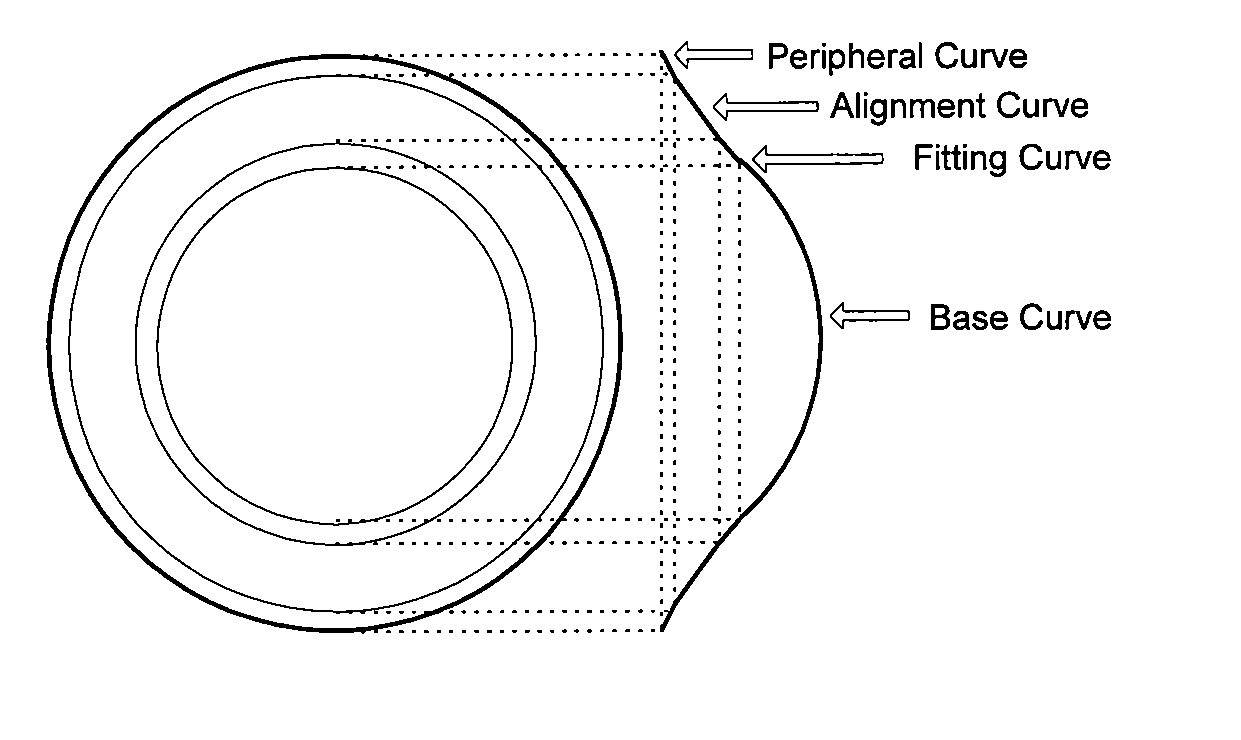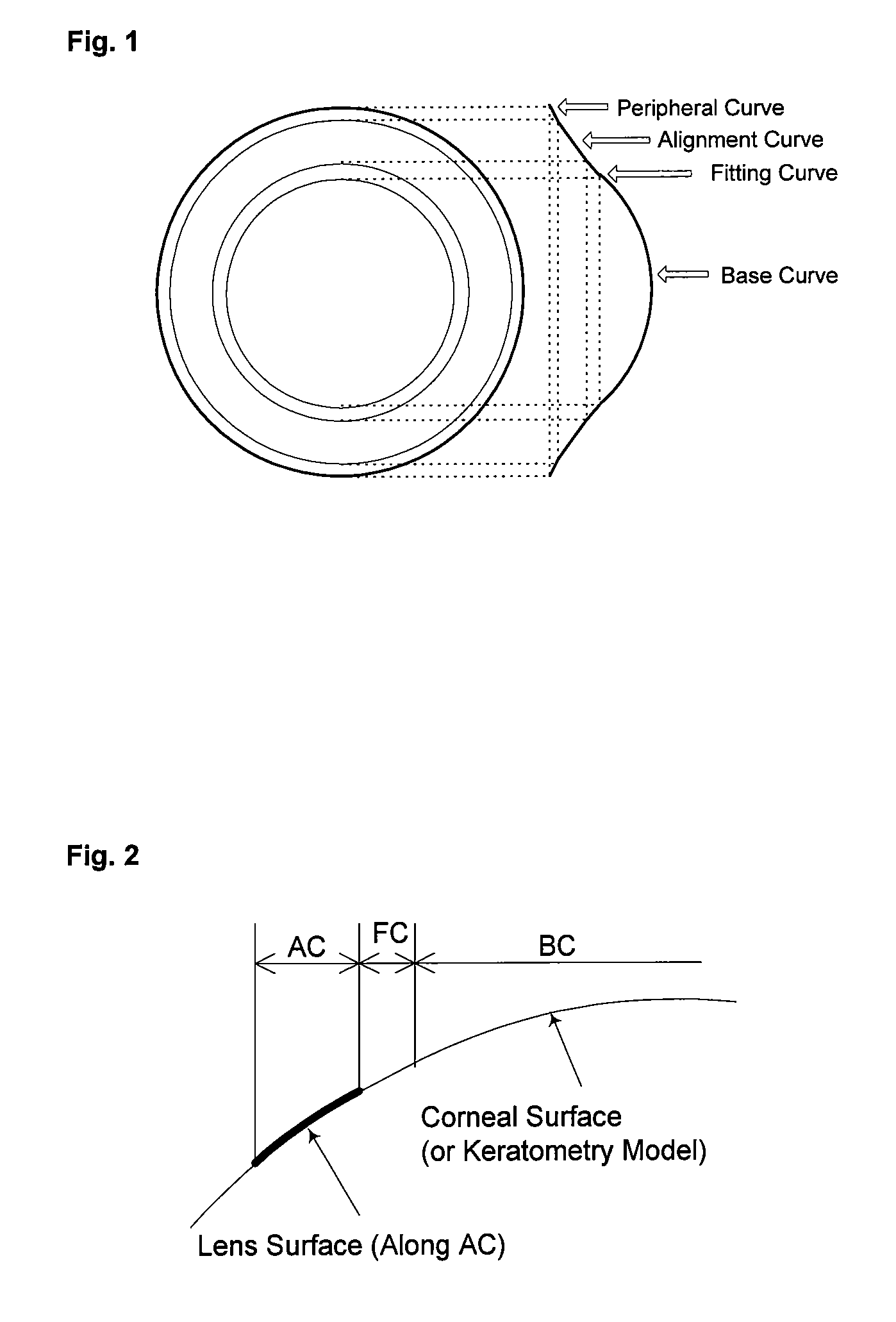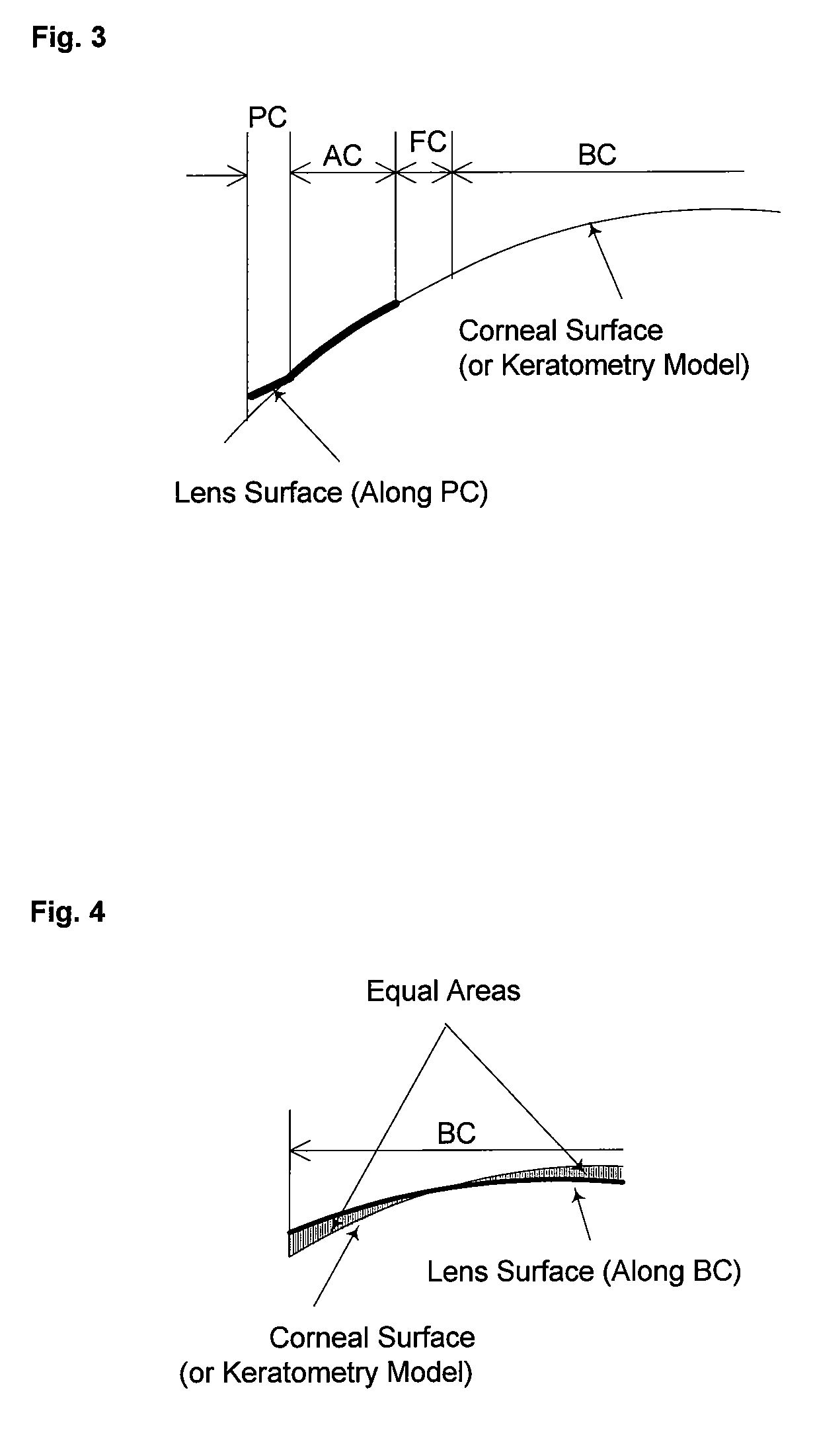Orthokeratology lens wear combined with chemical treatment to correct myopia, hyperopia or astigmatism
a technology of orthokeratology and lens wear, applied in the field of orthokeratology lens wear, can solve the problems of corneal malformation or defect, tissue swelling, and refractive errors still remain, and achieve the effects of enhancing hydration, and reducing the risk of cataracts
- Summary
- Abstract
- Description
- Claims
- Application Information
AI Technical Summary
Benefits of technology
Problems solved by technology
Method used
Image
Examples
example 1
Corneal Reshaping-Treatment of Myopia
[0079]This preliminary study was conducted at Dartmouth-Hitchcock Medical Center, Department of Surgical Research, as previously described in DeVore and DeVore, US2005 / 0106270. Porcine eyes were procured from a local slaughterhouse, positioned in a device to stabilize the eye and subjected to topographical evaluation using the Optikon 2000 system. The corneal surface was dried using sterile gauze and then wetted with drops of buffer solution. The wetted eyes were again dried and exposed again to the same solution. Then a peripheral ring around the circumference of the corneal surface, slightly away from the limbus and the central cornea, was carefully treated by adding drops of buffer containing the active agent, a 20 mg / ml solution of glutaric anhydride.
[0080]The eyes were then reexamined topographically and photos taken. Following evaluation, the eyes were placed in OptiSol for storage pending additional evaluations. Three eyes were treated usi...
example 2
In Vivo Cat Model
[0084]This study was conducted at Dartmouth-Hitchcock Medical Center, Department of Surgical Research, and was approved by IACUC, as previously described in DeVore and DeVore US2005 / 0106270. Two cats were treated with the active agent, glutaric anhydride. Treatment was applied to the right eye (OD) while the contralateral eye (OS) served as a control. Buffer solution (0.02M disodium phosphate solution at pH 9.0) was first applied to the corneal surface. This was immediately followed by application of a solution of glutaric anhydride in disodium phosphate into a peripheral ring of a corneal mold placed on the corneal surface. The mold provided a tight seal to prevent migration of the active agent to the central cornea. Two treatment applications were provided at Day 1 and Day 7. The dosage of the active agent was 50 mg / mL.
[0085]Eyes were examined for another 7 days following the second treatment. Results from topographical evaluation show that refractive power (D) of...
example 4
Treatment of Central Cornea to Increase Diopter Power
[0087]This study was conducted at Dartmouth-Hitchcock Medical Center, Department of Surgical Research, and was approved by IACUC. One cat was treated with the active agent, glutaric anhydride. Treatment was applied to the left eye (OS) while the contralateral eye (OD) served as a control. Buffer solution (0.02M disodium phosphate solution at pH 9.0) was first applied to the corneal surface. This was immediately followed by application of a solution of glutaric anhydride in disodium phosphate into the central well of a corneal mold placed on the corneal surface. The mold provided a tight seal to prevent migration of the active agent to the peripheral cornea. Two treatment applications were provided at Day 1 and Day 6. The dosage of the active agent was 50 mg / mL.
[0088]Eyes were examined for another 7 days following the second treatment. Results from topographical evaluation show that refractive power (D) of the treated eye for Cat 1...
PUM
| Property | Measurement | Unit |
|---|---|---|
| Acidity | aaaaa | aaaaa |
| Acidity | aaaaa | aaaaa |
| Length | aaaaa | aaaaa |
Abstract
Description
Claims
Application Information
 Login to View More
Login to View More - R&D
- Intellectual Property
- Life Sciences
- Materials
- Tech Scout
- Unparalleled Data Quality
- Higher Quality Content
- 60% Fewer Hallucinations
Browse by: Latest US Patents, China's latest patents, Technical Efficacy Thesaurus, Application Domain, Technology Topic, Popular Technical Reports.
© 2025 PatSnap. All rights reserved.Legal|Privacy policy|Modern Slavery Act Transparency Statement|Sitemap|About US| Contact US: help@patsnap.com



